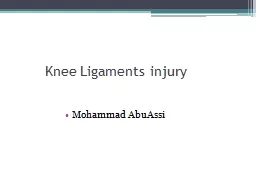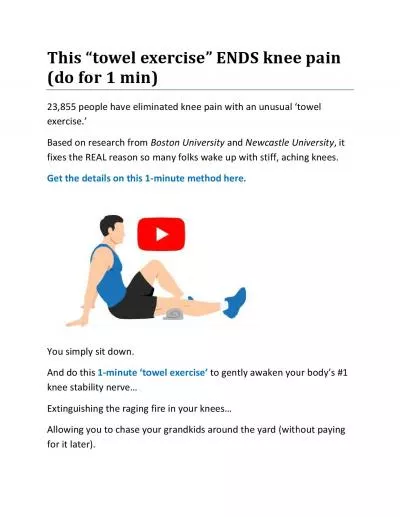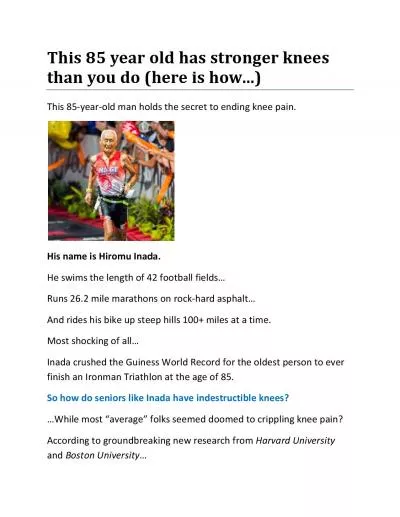PPT-A Rare Diagnosis and Repeated Knee Injury in a Young Athlete
Author : Younggunner | Published Date : 2022-08-03
Author Anthony Kohlenberg MD Coauthor Ketan Mody MD Editor Yaowen Hu MD Case Series Editor Michael Henehan DO History Patient Presentation CC Rightsided anterior
Presentation Embed Code
Download Presentation
Download Presentation The PPT/PDF document "A Rare Diagnosis and Repeated Knee Injur..." is the property of its rightful owner. Permission is granted to download and print the materials on this website for personal, non-commercial use only, and to display it on your personal computer provided you do not modify the materials and that you retain all copyright notices contained in the materials. By downloading content from our website, you accept the terms of this agreement.
A Rare Diagnosis and Repeated Knee Injury in a Young Athlete: Transcript
Download Rules Of Document
"A Rare Diagnosis and Repeated Knee Injury in a Young Athlete"The content belongs to its owner. You may download and print it for personal use, without modification, and keep all copyright notices. By downloading, you agree to these terms.
Related Documents














